Raspberry Pi 400 keyboard computer with Broadcom BCM2711C0 1.8 GHz processor has just launched, and we already published a teardown of the Raspberry Pi 400 hardware to check out the cooling solution and overall hardware design.
In this review, we’ll mostly focus on Raspberry Pi 400 and Raspberry Pi 4 differences, since both devices mostly rely on the same chips. After checking the different features, we’ll run Thomas Kaiser’s “SBC Bench” script to test thermal cooling and benchmark both RPi hardware platforms.
Raspberry Pi 400 vs Raspberry Pi 4 Model B Features
Since under the hood, the two platforms are very similar, we’ll highlight the difference as shown in the table below courtesy of Cytron.
Price is not shown in the table above, but Raspberry Pi 400 costs $70, while Raspberry Pi 4 with 4GB goes for $55. That’s $15 extra for a keyboard, case, and cooling solution, so the price is very attractive.
Stock performance is a little higher thanks to a 1.8 GHz processor, but as we’ve seen in the past it’s always possible to overclock Raspberry Pi 4 to 2.0+ GHz provided you’ve got a proper cooling solution.
The keyboard PC adds a… keyboard as one should expect, with US, UK, DE, FR, IT, or ES layout, a power button that enables soft power on/off and may help to prevent file system corruption, as well as a Kensington Lock hole to protect again theft, for example at school. IMHO, it’s a more portable solution, than having a keyboard and Raspberry Pi 4 + heatsink or fanless case.
Having said that, you’ll lose some features including the CSI camera and DSI display connectors, PoE, the 3.5mm audio jack, and one USB 2.0 port. The latter is not really a problem, as in many cases, it would be used by an external USB keyboard.
Raspberry Pi OS System Info
The keyboard computer is software-compatible with Raspberry Pi 4, so I could just install Raspberry Pi OS 32-bit released last August for the review.
The user experience is exactly the same as in Raspberry Pi 4, so let’s check out some of the system information:
|
1 2 3 4 5 6 7 8 9 10 11 12 13 14 15 16 17 18 19 20 21 22 23 24 25 26 27 28 29 30 31 32 33 |
pi@raspberrypi:~ $ cat /etc/issue Raspbian GNU/Linux 10 \n \l pi@raspberrypi:~ $ uname -a Linux raspberrypi 5.4.72-v7l+ #1356 SMP Thu Oct 22 13:57:51 BST 2020 armv7l GNU/Linux pi@raspberrypi:~ $ df -h Filesystem Size Used Avail Use% Mounted on /dev/root 15G 7.8G 6.0G 57% / devtmpfs 1.8G 0 1.8G 0% /dev tmpfs 1.9G 0 1.9G 0% /dev/shm tmpfs 1.9G 8.6M 1.9G 1% /run tmpfs 5.0M 4.0K 5.0M 1% /run/lock tmpfs 1.9G 0 1.9G 0% /sys/fs/cgroup /dev/mmcblk0p1 253M 54M 199M 22% /boot tmpfs 383M 0 383M 0% /run/user/1000 pi@raspberrypi:~ $ cat /proc/cpu cpu/ cpuinfo pi@raspberrypi:~ $ cat /proc/cpuinfo processor : 0 model name : ARMv7 Processor rev 3 (v7l) BogoMIPS : 108.00 Features : half thumb fastmult vfp edsp neon vfpv3 tls vfpv4 idiva idivt vfpd32 lpae evtstrm crc32 CPU implementer : 0x41 CPU architecture: 7 CPU variant : 0x0 CPU part : 0xd08 CPU revision : 3 ... Hardware : BCM2711 Revision : c03130 Serial : 10000000c311ea9d Model : Raspberry Pi 400 Rev 1.0 |
No differences here, except or the revision code – c03130 – with “13” being the code for Raspberry Pi 400 and the first “0” meaning it’s manufactured by Sony UK.
|
1 2 3 4 5 6 7 8 9 10 11 12 13 14 15 16 17 18 19 20 21 22 23 24 25 26 27 28 29 30 31 32 33 34 35 36 37 38 39 40 41 42 43 44 |
pi@raspberrypi:~ $ sudo inxi -Fc0 System: Host: raspberrypi Kernel: 5.4.72-v7l+ armv7l bits: 32 Console: tty 1 Distro: Raspbian GNU/Linux 10 (buster) Machine: Type: ARM Device System: Raspberry Pi 400 Rev 1.0 details: BCM2711 rev: c03130 serial: 10000000c311ea9d Argument "Raspberry Pi 400 Rev 1.0" isn't numeric in sprintf at /usr/bin/inxi line 6969. CPU: Topology: Quad Core model: ARMv7 v7l variant: cortex-a72 bits: 32 type: MCP Speed: 1800 MHz min/max: 600/1800 MHz Core speeds (MHz): 1: 1100 2: 1100 3: 1100 4: 1100 Graphics: Device-1: bcm2711-vc5 driver: vc4_drm v: N/A Device-2: bcm2711-hdmi0 driver: N/A Device-3: bcm2711-hdmi1 driver: N/A Display: server: X.org 1.20.4 driver: modesetting unloaded: fbdev tty: 80x24 Message: Advanced graphics data unavailable in console for root. Audio: Device-1: bcm2835-audio driver: bcm2835_audio Device-2: bcm2711-hdmi0 driver: N/A Device-3: bcm2711-hdmi1 driver: N/A Sound Server: ALSA v: k5.4.72-v7l+ Network: Message: No ARM data found for this feature. IF-ID-1: eth0 state: up speed: 1000 Mbps duplex: full mac: dc:a6:32:d7:ed:db IF-ID-2: wlan0 state: down mac: dc:a6:32:d7:ed:dd Drives: Local Storage: total: 14.84 GiB used: 7.80 GiB (52.6%) ID-1: /dev/mmcblk0 vendor: SanDisk model: SL16G size: 14.84 GiB Partition: ID-1: / size: 14.29 GiB used: 7.75 GiB (54.2%) fs: ext4 dev: /dev/mmcblk0p2 ID-2: /boot size: 252.0 MiB used: 53.9 MiB (21.4%) fs: vfat dev: /dev/mmcblk0p1 Sensors: System Temperatures: cpu: 39.4 C mobo: N/A Fan Speeds (RPM): N/A Info: Processes: 165 Uptime: 5m Memory: 3.81 GiB used: 251.5 MiB (6.4%) gpu: 76.0 MiB Init: systemd runlevel: 5 Shell: bash inxi: 3.0.32 |
Mostly the same as Raspberry Pi 4, except for the 1.8 GHz frequency, and the cool 39.4°C system temperature in a room at 28°C. That also means it’s a candidate for overclocking, but I have not tried it in this review
Raspberry Pi 400 Benchmarks and Thermal Testing
I’ve installed both rpimonitor and SBC Bench for this section. Here are the results:
|
1 2 3 4 5 6 7 8 9 10 11 12 13 14 15 16 17 18 19 20 21 22 23 24 25 26 27 28 29 30 |
sudo ./sbc-bench.sh -c sbc-bench v0.7.4 Installing needed tools. This may take some time... Done. Checking cpufreq OPP... Done. Executing tinymembench. This will take a long time... Done. Executing OpenSSL benchmark. This will take 3 minutes... Done. Executing 7-zip benchmark. This will take a long time... Done. Checking cpufreq OPP... Done. It seems neither throttling nor frequency capping has occured. Memory performance: memcpy: 2675.4 MB/s memset: 3107.4 MB/s (0.9%) 7-zip total scores (3 consecutive runs): 6581,6535,6533 OpenSSL results: type 16 bytes 64 bytes 256 bytes 1024 bytes 8192 bytes 16384 bytes aes-128-cbc 74936.49k 91939.58k 99726.17k 101606.74k 102298.97k 102263.47k aes-128-cbc 75166.77k 92169.83k 99692.63k 101724.50k 102206.12k 102285.31k aes-192-cbc 67517.95k 80832.83k 86475.95k 87858.52k 88342.53k 88457.22k aes-192-cbc 67460.47k 80889.83k 86204.16k 87939.75k 88473.60k 88397.14k aes-256-cbc 61194.19k 72072.73k 76320.00k 77589.85k 77914.11k 77949.61k aes-256-cbc 61098.42k 72037.61k 76419.50k 77493.59k 77933.23k 77824.00k Full results uploaded to http://ix.io/2Cyi. Please check the log for anomalies (e.g. swapping or throttling happenend) and otherwise share this URL. |
No throttling as been detected, and the temperature chart shows why:
It started around 37°C at idle and peaked a little over 50°C during 7-zip multi-threaded benchmarks.
I won’t compare it to bare a Raspberry Pi 4 since we know how it goes, but instead to a Raspberry Pi 4 with KKSB fanless metal case @ 1.5 and 2.0 GHz.
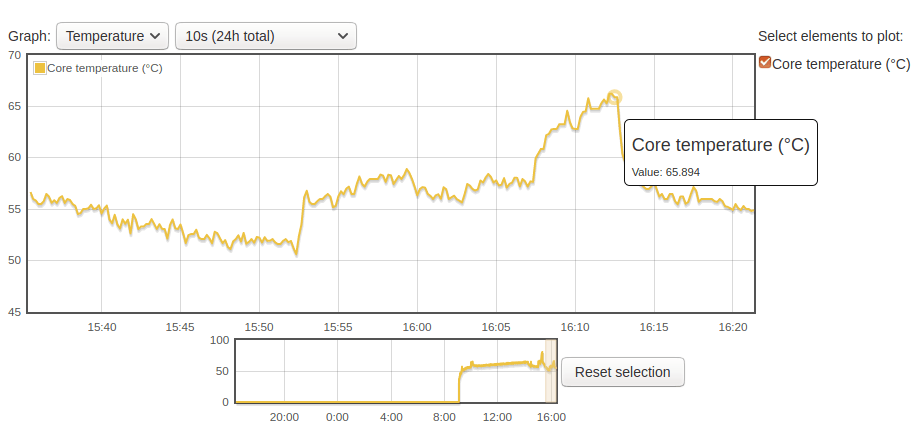
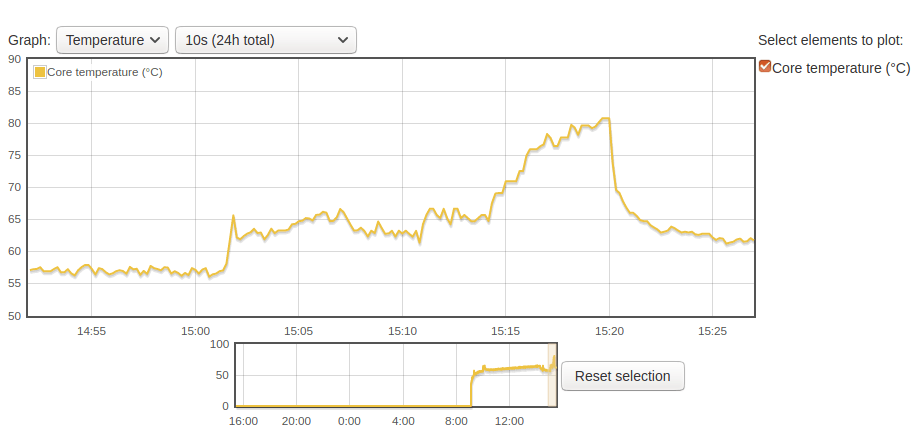
Note the charts above were produced in February 2020 with the latest firmware that included all recent optimizations for cooling and lower power consumption. Needless to say, the results are impressive as Raspberry Pi 400 is equipped with an adequate cooling solution.
Now let’s compare the benchmarks results (higher is better) and max temperatures (lower is better):
| Raspberry Pi 400 @ 1.8 GHz | Raspberry Pi 4 @ 1.5 GHz | Raspberry Pi @ 2.0 GHz | |
|---|---|---|---|
| memset (MB/s) | 2675.4 | 2662.5 | 2749.1 |
| memcpy (MB/s) | 3107.4 | 3436.9 | 3849.9 |
| 7-zip | 6549.66 | 5454 | 6807 |
| OpenSSL (hash/s) AES-256-CBC - 16KB | 77824.00k | 64951.64k | 86567.59k |
| Max temperature (°C) | 51.6 | 65.2 | 80.3 |
7-zip and OpenSSL mostly follow the CPU frequency, but somehow memset and memcpy show lower memory bandwidth in Raspberry Pi 400. The keyboard PC is better at cooling thanks to the large heat spreader that almost matches the results with active cooling.
Raspberry Pi 400 and HAT expansion boards
Raspberry Pi 400 comes with the traditional 40-pin header which can easily be used with jumper cables, or a 40-pin ribbon cable to HAT expansion boards. But I don’t own the latter, so I wonder if I could somehow plug a HAT directly into the keyboard. I dusted off RabbitMax Flex Pi HAT to give it a try.
Pin 1 and Pin 40 are clearly marked on the keyboard, so it’s easy to plug it correctly, but depending on the model it may not fit perfectly, as some pins from the add-on board may prevent full insertion.
If your HAT board does not have pins on the bottom side around one centimeter above the 40-pin header it should be OK. Nevertheless, it’s probably a better idea to get a ribbon cable.
Final words
I have to say I’m impressed, the Raspberry Pi Foundation has done a great job here. Raspberry Pi 400 keyboard PC comes with most goodies from Raspberry Pi 4, but you don’t have to mess with cases or heatsinks for cooling, it just works great out of the box, and I’m sure it will be popular especially in education settings. It’s also priced aggressively at just over $15 an equivalent Raspberry Pi 4 SBC with 4GB RAM, or about the price – or even lower in some cases – of a fanless Raspberry Pi metal case.
It’s not for everyone though. First, it’s not practical/suitable for embedded projects where the single board computer form factor remains ideal. Educators must keep in mind that any projects relying on the Raspberry Pi camera and/or display will not be possible, nor any project with PoE, although I’d kind of like the concept of a PoE powered keyboard PC…
I’d like to thank Cytron for sending a review sample. They sell Raspberry Pi 400 keyboard computer and ship it worldwide for $70 plus taxes and shipping.

Jean-Luc started CNX Software in 2010 as a part-time endeavor, before quitting his job as a software engineering manager, and starting to write daily news, and reviews full time later in 2011.
Support CNX Software! Donate via cryptocurrencies, become a Patron on Patreon, or purchase goods on Amazon or Aliexpress


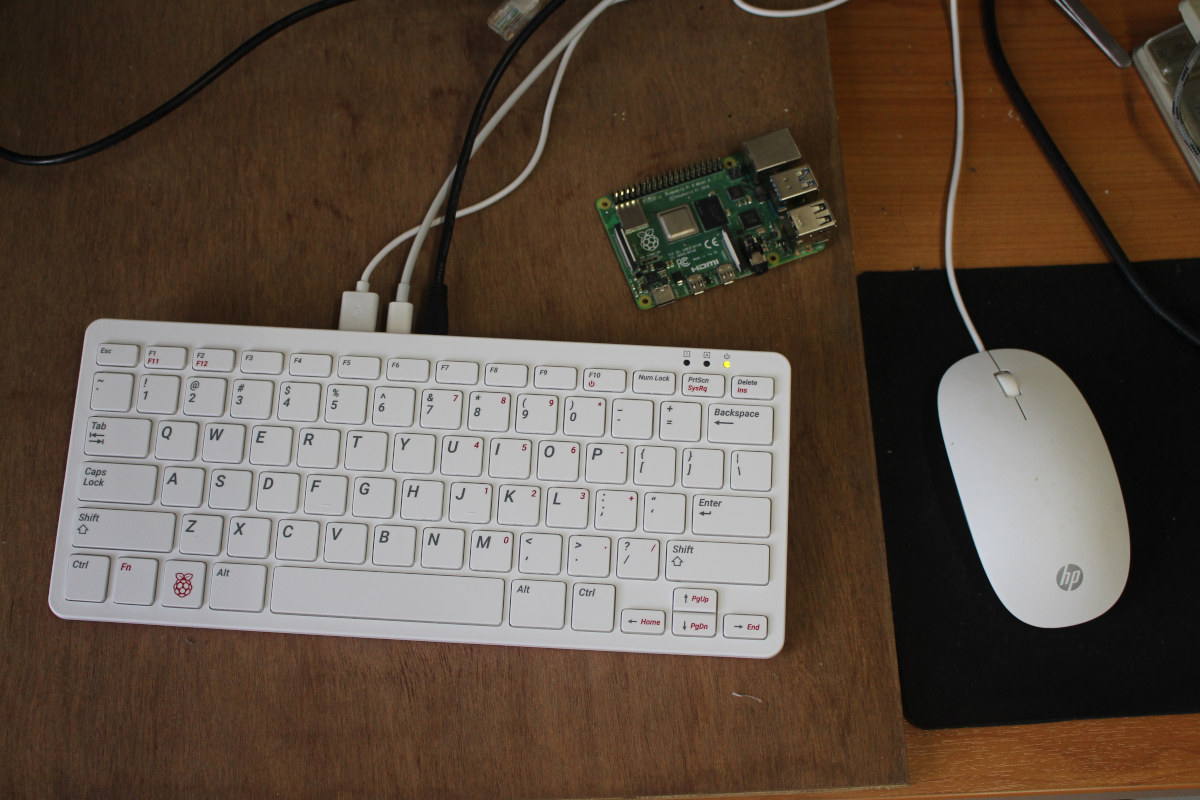
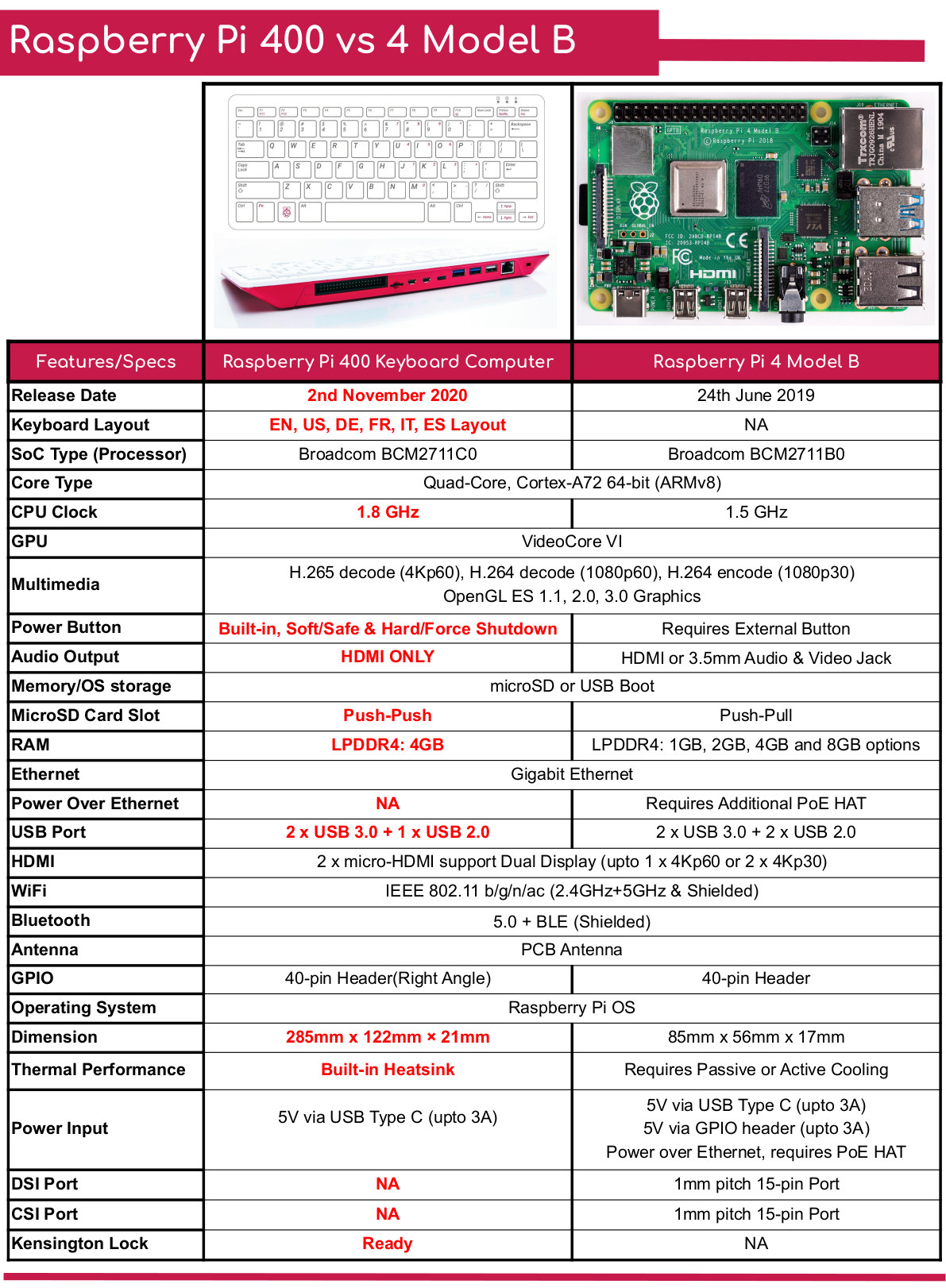
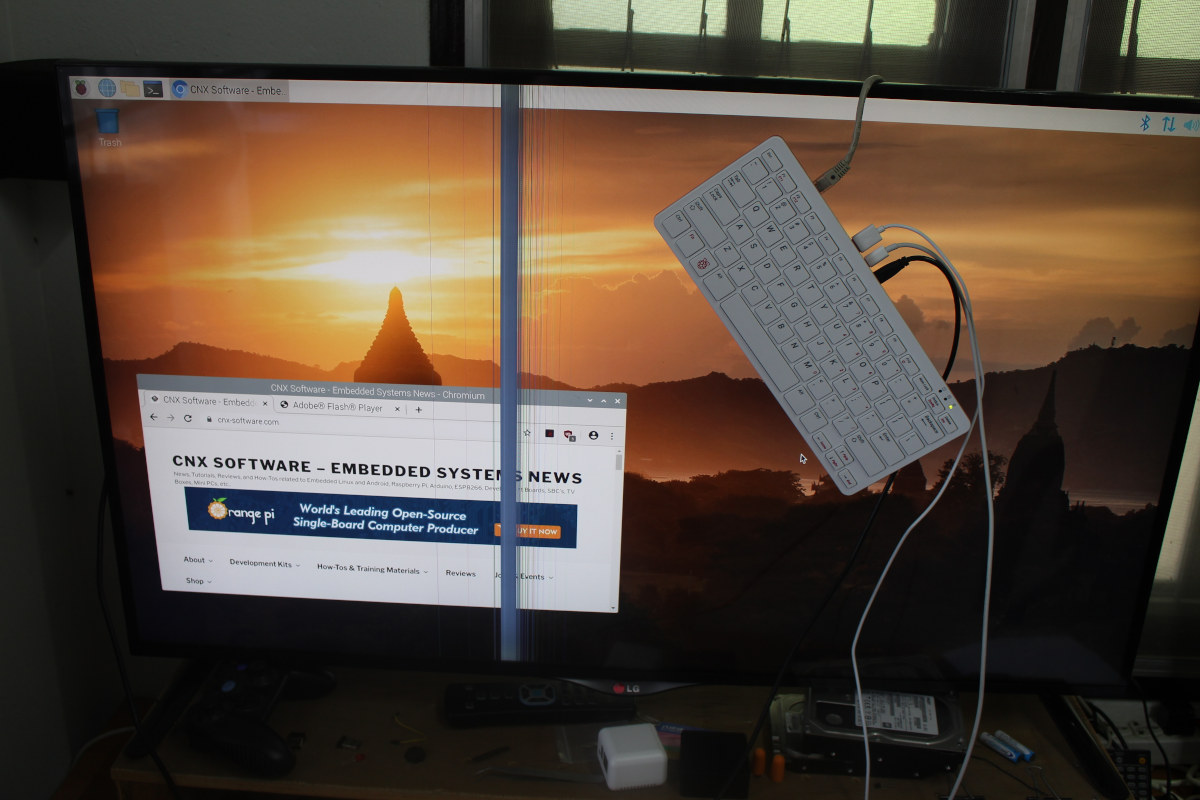
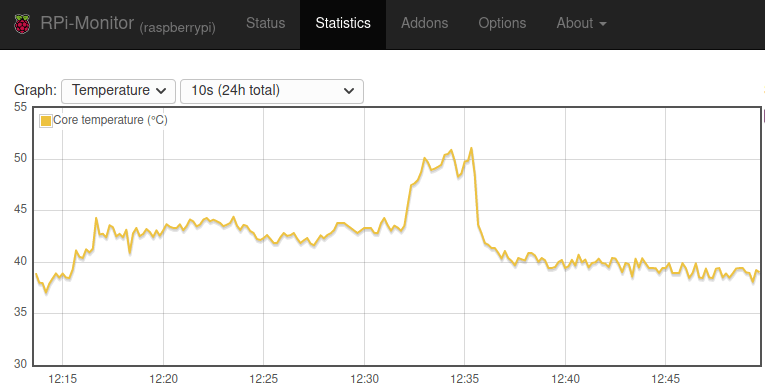
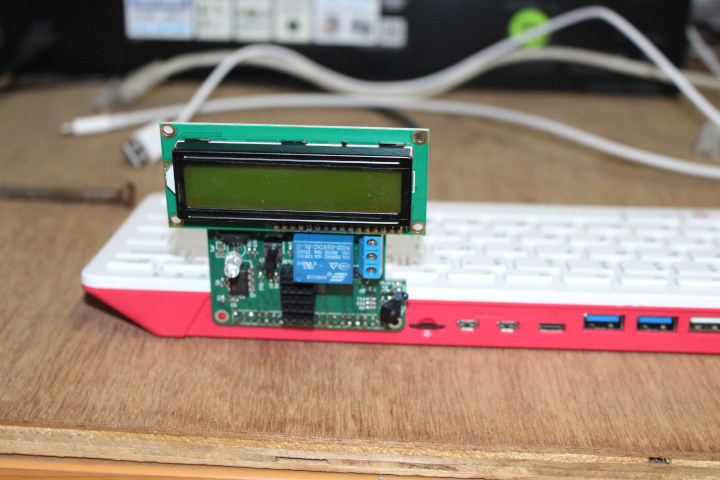
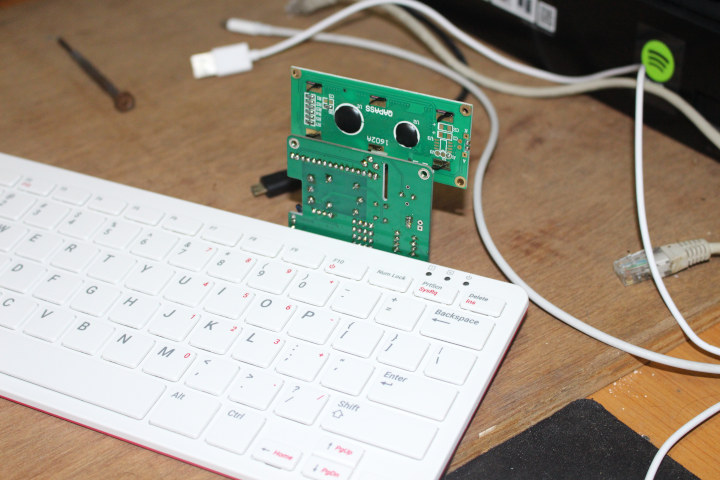
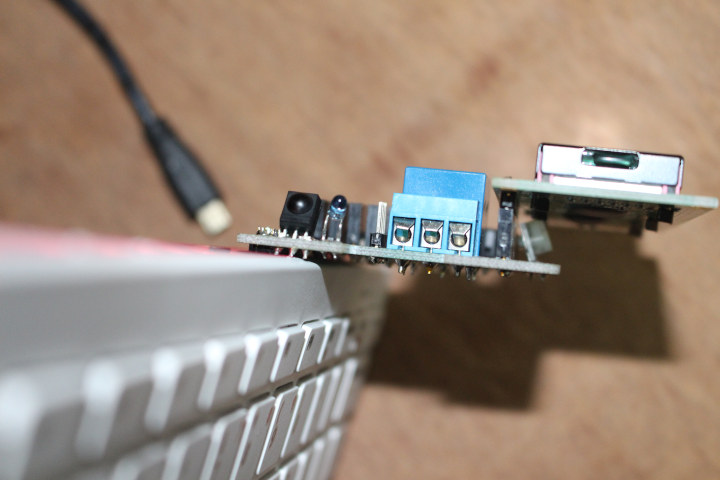


Sticking with micro HDMI at this point is kind of a joke as they have to redesign the whole board anyway.
At least they’re consistent…
I wouldn’t mind one full-size and one micro for the consistency
Micro HDMI isn’t a big deal,. The real problem is that every SBC is going to switch to DisplayPort over USB-C eventually.
Still better than catering to the whole four micro HDMI cable owners.
Lol. More like 4 million. Single-handedly driven by Pi 4 sales.
Even more micro HDMI is an issue, as I have to buy cables I won’t be able to reuse later, having plenty of HDMI cables laying around…
Good thing there are simple mechanical adapters from HDMI to micro HDMI then…
Which won’t work, as they are phisically too big and mechanically not strong enough when a huge HDMI plug incl. cable are hanging from a micro HDMI. Tried it on mine and it failed, my pi4 is headless for the moment…
These are handy
https://www.ebay.co.uk/itm/HDMI-FEMALE-TO-MICRO-HDMI-SOCKET-MALE-PLUG-ADAPTOR-ADAPTER-CONVERTER/302851533320?hash=item46835baa08:g:w6EAAOSwbuFbem8c
If they’ve the parts in inventory, now you just ended up adding part SKUs that you have to keep track of…just for this.
If you have never built boards before (I. Have.) you should refrain from commenting on things that’re as much logistics details as they are engineering ones.
1) They’ve used full sized HDMI connectors in the past and even do so on current production boards
2) It’s probably one of the easiest connectors to source as it’s used in *freaking everything*
3) You’re not the only one who’s build boards before. You should refrain from thinking that your experience is representative of others.
I’m curious to know what happened to the Pi4’s USB-C OTG port. Had they retained it, the Pi 400 could have acted as a “dumb” keyboard for another device, using Linux USB Gadget features. In essence, the Pi 4 has 5 USB 2.0 ports, 1 OTG directly connected to the SoC, and 4 via PCIe. Could you perhaps run “lsusb -t” to show the hierarchy of the USB ports? Perhaps with something plugged into each one? It might be that the USB 2.0 port is directly connected to the OTG port, while the two USB 3.0 ports (and the keyboard… Read more »
It’s pretty easy to see the routing in the teardown pictures.
https://www.cnx-software.com/wp-content/uploads/2020/11/Raspberry-Pi-400-Motherboard-high-res.jpg
As you say. It is clear that the USB-A ports are all connected to the Via PCIe USB3.0 controller, and the OTG port is therefore likely completely inaccessible.
A little disappointing, but I can understand that having a gadget connector that doesn’t actually result in a keyboard appearing on the remote end (assuming the Pi is not properly configured) may be rather confusing!
That all said, I can’t quite make out whether there are any data lines on the USB-C power connector, which would be the obvious place to put them.
Here’s the output: pi@raspberrypi:~ $ lsusb -t /: Bus 02.Port 1: Dev 1, Class=root_hub, Driver=xhci_hcd/4p, 5000M /: Bus 01.Port 1: Dev 1, Class=root_hub, Driver=xhci_hcd/1p, 480M |__ Port 1: Dev 2, If 0, Class=Hub, Driver=hub/4p, 480M |__ Port 1: Dev 3, If 0, Class=Human Interface Device, Driver=usbhid, 1.5M |__ Port 4: Dev 4, If 1, Class=Human Interface Device, Driver=usbhid, 1.5M |__ Port 4: Dev 4, If 0, Class=Human Interface Device, Driver=usbhid, 1.5M 1234567 pi@raspberrypi:~ $ lsusb -t/: Bus 02.Port 1: Dev 1, Class=root_hub, Driver=xhci_hcd/4p, 5000M/: Bus 01.Port 1: Dev 1, Class=root_hub, Driver=xhci_hcd/1p, 480M |__ Port 1: Dev… Read more »
You sure that Holotek MCU is connected over USB? Can’t see the routing on the bottom of the PCB so…
Not 100% sure, but that’s a USB MCU, and there’s one ;ess USB port in RPI 400. So I just assumed that internally it should appear as a USB keyboard and connected to one of the USB hosts.
When you did the lsusb readout, was anything plugged into the external ports? It seems a bit strange, but it adds up with the low speed support of the MCU. Not sure why only two buses show up though, as each USB 3.0 port should be on a unique bus and then there ought to be at least two USB 2.0 ports too.
A mouse was connected. I’ve also just connected a MINIX USB-C hub with SSD now, and pass-through works, but the SSD is not detected. More output: pi@raspberrypi:~ $ lsusb -t /: Bus 02.Port 1: Dev 1, Class=root_hub, Driver=xhci_hcd/4p, 5000M /: Bus 01.Port 1: Dev 1, Class=root_hub, Driver=xhci_hcd/1p, 480M |__ Port 1: Dev 2, If 0, Class=Hub, Driver=hub/4p, 480M |__ Port 1: Dev 3, If 0, Class=Human Interface Device, Driver=usbhid, 1.5M |__ Port 4: Dev 4, If 1, Class=Human Interface Device, Driver=usbhid, 1.5M |__ Port 4: Dev 4, If 0, Class=Human Interface Device, Driver=usbhid, 1.5M pi@raspberrypi:~ $… Read more »
It’s weird that the devices are only showing up under bus 01. They seem to have wired up things a bit strange.
Took a better look on my PC, so I guess it’s like this if I’m reading it right now, the USB 3.0 device i.e. the VL805 supports 4p (p for ports, which is according to its spec) and it’s one “port” with 1 device on Bus 02. Bus 01 on the other hand has one port, but two devices, of which one is 1p and one is 4p. The 1p is 480Mbps, while everything connected to device two is 1.5Mbps and they’re all HID devices. Two of those are the Holotek and the Chicony device, so built in keyboard and… Read more »
The drive works fine. Could it just be the USB-C port is only for power?
Yeah – OTG would be nice to have. Because of the OTG and the Linux USB gadget mode, some even consider the normal Raspi 4 to be the best Ipad PRO accessory/peripheral device:
https://www.youtube.com/watch?v=IR6sDcKo3V8
I could imagine the above working even nicer with the Raspi 400 if OTG would be available…
I can recommend Ubuntu 20.10 with 5.9 kernel
This new 5.9 kernel has new kms driver
And they fixed sound problem with hdmi last week
And whole gnome is working really nice with wayland
Well, I don’t know. As a machine for tinkering, why not. But as a PC replacement?
Add $100, and you have a notebook with display, better keyboard, SSD and a much faster processor. Doesn’t make too much sense.
Nice cheap school computer thought. Especially with some tinkering possibilities you don’t have on a laptop. It’s clearly not a laptop or proper desktop replacement though.
In this case, they should’ve added a VGA output, so that schools (especially in poor countries) could use old monitors. Would’ve cost them next to nothing.
Might be cheaper to get an HDMI to VGA adapter.
> Would’ve cost them next to nothing.
Sure? Converting from digital HDMI to analogue VGA requires an active signal converter. Back then with DVI (DVI-I or DVI-A) passive converters/cables were possible since the GPU already created analogue signals. But I’m not sure whether the BCM2711 can do this.
Considering the RPi foundation dropped the analog video out on the regular RPi 4, it most likely can’t do analogue. Converting one HDMI or MIPI DSI to VGA isn’t cheap, despite what some people seem to think and is often multi-chip solutions, as you most likely know.
My bad, it seems like the SoC still has composite video output.
It does digital signage. That being said, Composite is not the same thing as a VGA device. Adding one on the board usually entails something on the order of 10-15 dollars, give or take, on total costs. It’s not something easy/cheap proportionately to the whole. If it were as non-issue as implied, the basic converters would be $10 instead of $40-50 retail. A lot of people don’t have a handle on the design and oftentimes blithely presume it’s easy. Until you build out your own boards, do a lot of FPGA work, etc. you don’t really have the concepts down… Read more »
Except that a regular notebook doesn’t provide you the GPIO outputs that are easy to connect to a breadboard for education purposes.
I guess there you could easily add some usb gpio converter, oh how great have those good old times with the parallel port been 😉
Yeah, but a cheap-as-chips Arduino board would do the job nice and not expose the main computer to shorts, over voltages, static, etc.
Why didn’t they rely on RPi compute module ? It would have leveraged the volumes of CM and it would also have enabled various RAM/eMMC/PCIe configurations… Would it have significantly increased the cost ?
(also, given the form-factor, I am disappointed that it does not have any jack output, nor full-size HDMI)
They probably wanted to keep the price as low as possible. A carrier board for the compute module would’ve been much more expensive. But yeah, it would’ve offered more possibilities, including the one to upgrade the compute module when a new one arrives.
I suspect that someone will provide that sort of thing. It’s the class of thing you’re actually griping for. It’s just not going to be as cheap as you believe it will be.
I always look forward to seeing the TV with the vertical stripe down the screen in reviews. It adds a level of “authenticity” (keeping it real) that other review sites do not have.
This review took it to an entirely new level with the keyboard draped across the front dangling precariously. I dare say it achieve “work of art” status!
🙂
Can we send that TV to the “Will it Blend” YouTube guys and get Jean-Luc a new one?
I really wonder if chinese factories like orangepi will follow suit and bring similar products for cheaper? Given the prices for cheap tv boxes, a keyboard chassis could cost 5-10$ at most, so they could churn those out at half the cost of the 400.
Already kind of being done. If you go on Aliexpress and search Android Netbook, you can find Allwinner A50 a7 @ 1.8GHz 1GB 10″ screen model.
That’s not the same segment of devices at all. Netbooks exist for a very long time in one form or another, while keyboard PCs are a rarity since at least the late 80s.
No
Retrogames C64 with full keyboard was launched before Rpi 400.
Not forgeting the ZX Spectrum Next
Oh, also the2016, Vensmile K8 Mini PC
Let’s not forget
https://www.cnx-software.com/2016/02/08/k3-wintel-keyboard-pc-specs-unboxing-and-teardown/
Go on banggood or Aliexpress and search Vnopn K600-N6 Intel Z3735F
I really do not think this is going to be a trend. My *theory* on this is that RPi partnered with someone to get the PI4 chip made. This partner would get these keyboard device things and everyone else would get PI4. It would appear that this partner has dropped plans for its use of PI4 (or failed in the market). This would explain the absurd amount of unsold PI4 chips and unused manufacturing capacity that resulted in PI4 compute module in addition to this “new” product. This keyboard thing would be the unused surplus from the partnership similar to… Read more »
RPI doesn’t make the SoC, that’s a Broadcom part, made specifically for the raspberry pi products. So if anything, broadcom would have a stockpile of chips. This seems more like a product to diversify their portfolio of devices, while having almost no additional need for tooling (other than custom PCB and bottom half of the keyboard case). This is also evident by the choice of ports. They could just as easily use regular sized HDMIs (even two of them) but because they already have tons of orders for microhdmi, it makes sense to use them here as well. Also, right… Read more »
> that’s a Broadcom part, made specifically for the raspberry pi products.
That’s in contrast to what the RPi Trading Ltd. guys are telling:
https://github.com/raspberrypi/documentation/issues/1217#issuecomment-538081361
Where exactly in that post did you come to that conclusion?
BCM2711 is a broadcom part, but made exclusively for the rpi products. But Broadcom still designs and outsources manufacturing (since broadcom’s a fabless company) for those chips, not rpi trading.
He could easily be talking about a similar chip from the same family, where components like usb controllers or videocore are shared.
> BCM2711 is a broadcom part, but made exclusively for the rpi products. BCM2711 doesn’t make that much sense for something like the RPi 4 where PCIe attached USB3 adds a tremendous amount to the heat and consumption problems this specific board faces. If RPi Trading Ltd. would be in a position to ask Broadcom for a specifically designed SoC then they would clearly use an internal XHCI implementation instead of something where two PCIe PHYs have to be powered for almost no reason. I would assume BCM2711 was the closest fit in Broadcom’s portfolio. And most probably they could’ve… Read more »
It’s also my understanding that BCM2711 was specifically made for Raspberry Pi 4. Since they expected to sell a few millions that may have made sense. BCM2711 is nowhere to be found on Broadcom website.
> BCM2711 is nowhere to be found on Broadcom website.
And the same is true for every other VideoCore VI or V chip (like the BCM7251 for example).
That’s because it’s carved out from a settopbox SoC, but customized for rpi trading. Die is most certanly shared with other products, but with cutdown features, that are not needed for rpi. Explains also why things are implemented the way they are.
Rpi is popular, but not that popular to warrant designing, taping out and manufacturing a completly seperate chip just for them. This kind of practice is commonplace in the entire semiconductor industry.
> customized for rpi trading … cutdown features Which features exactly? What is customized? This SoC has an USB3/XHCI controller that can’t be used by RPi Trading Ltd. people so that they had to increase BOM costs, consumption and generated heat to get USB3 on the RPi 4 and on this thing here. > Rpi is popular, but not that popular to warrant designing, taping out and manufacturing a completly seperate chip just for them. That’s exactly my point. The BCM2711 is far from ideal for an RPi 4 or RPi 400 (CM4 is a different story) and I guess… Read more »
Good for the competition in the low cost space…
Good old BBC have a gushing article about Pi 400 and one captioned photo says
” computer comes with its own operating system but can also be made to run a version of Windows ”
With no mention, it is the IOT stripped back version of Win 10. I can see the confusion buildiing already.
rpi4 also runs full win10 arm btw.
Please provide link to full Win 10 for RPI 4 All I find is ” Windows 10 on ARM experienceThe performance is apparently better than Raspberry Pi 3, but there are some limitations. For example, the built-in WiFi or Ethernet doesn’t work so you would need to buy a dongle. Google Chrome is also not supported and you would need to use Microsoft Edge to browse the internet. The idea of running the Windows 10 desktop OS on a Raspberry Pi is intriguing and it works pretty well, thanks to the tweaks made by the developers. Mind you, you need… Read more »
its there and it works. But obviously not very useful.
I half expected a bunch of whining about Micro HDMI connectors in the group. Wasn’t disappointed. Guys… A short cable adapter is all you need and, no it doesn’t break anything any differently than a long cable. I’ve got quite a few and it’s…embarassing…to see this stuff. This is just like the people moaning and groaning about everything being off of a single USB 2.0 leg in the prior gens of this device- when the CPU in the SoC can only exceed that single link in a very narrow range of applications. GigE, etc. was only kind-of, sort-of possible as… Read more »
Nice workstation but missing a way to use a strong internal storage solution like NVMe or mSATA.
Not for 70$…
Just a thought about HAT extension cable – can’t you use good old IDE cable for that? Yes, I know it’s F-F, but getting two rows of pins for F-M conversion shouldn’t be a problem either.
It would’ve been nice if some free ‘air-space’ in the keyboard were used to allow a slot for an ssd to be held, even if still connected over wire to the usb port. A bootable ssd substantially increases pi’s allround performance and adds minimal weight.